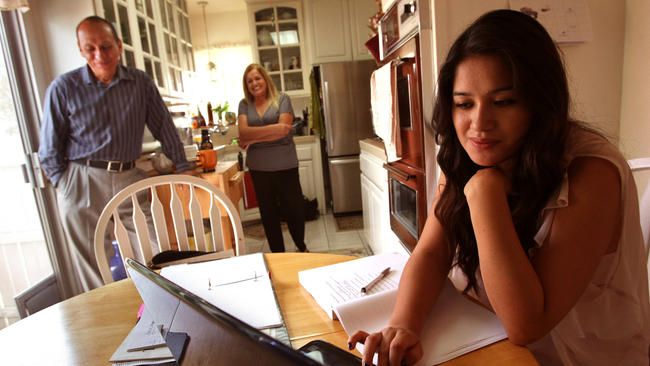
2020 has already been a rollercoaster ride for everyone, however, as a senior in college, I assumed this ride would look a lot different. When I would daydream about this year, I saw myself spending my last semester hanging out with friends, spending long nights in the library, talking to my professors face-to-face about my future and having a job laid out. In reality, this hasn’t been the case. Instead, I went on spring break, and returned to my campus just to be sent home later that week. Granted, I was lucky, I spent an extra week with my roommates while some of my fellow classmates didn’t even return from spring break. Finding out that classes were moving online for the rest of the semester was a big disappointment. Not being able to physically finish with my friends was a hard fact to process and accept.
MOVING HOME
Once I was home, I only had two days to adjust to being with my family again. This included claiming my room back from the storage my parents had turned it into. My mom and sister are also currently working from home, which can lead to distractions.

My home is also located in an area where we are prone to power outages during minor storms. This had led to me not being able to do my school work after a storm. It has also caused my computer’s battery to die, and I couldn’t do much of my work while I waited for a replacement to come in the mail.
Then there was the adjustment to online classes. As someone who has spent almost four years in a college classroom, this was a difficult change. With it my motivation was lost, and my anxiety skyrocketed. For everyone, this is an anxious time. However, for seniors, we have no idea what will happen next. My college gave students an extra two days of spring break for professors to prepare for online classes. For all students, we had no idea what online school would look like. For one of my classes this includes daily discussion posts, while another one is held on Zoom. As students are adjusting to this change, professors have been extremely understanding when it comes to classwork. Professors are struggling just like the students, and are trying to be as flexible as they can during this time.
One of the most important events in a student’s life is graduation. For a lot of seniors across the USA this has been postponed. This also goes for my college; our graduation has been postponed without a clear date. This means that for some of us, we might not get a chance to actually walk on stage and receive our diploma. Thankfully all diplomas will be mailed to us at home, but it has lost the effect. As a first-year college student, I had dreamed of walking on to that stage and receiving my diploma with my family in the audience. Now that might not happen. The school has promised that we will have a proper graduation, once it is allowed. However, there is a chance that by then the seniors would have moved on.

ANXIETY ISSUES SET IN
For everyone this is an anxious time. For me, my situation has made my depression worse. Being stuck in the house without a change of environment can really effect a person’s mental health. My university has set up off campus advisors for each student. These advisors get in touch with their assigned student every week or so, and check in on how they are doing. My advisor got in touch with me about two weeks after everything changed.
Just this interaction every week or so, honestly has helped me gain my motivation back. During this time, it is really important to stay in touch with friends. I’ve found this to be extremely helpful for my mental health. I also Zoom call my roommate to study together. This allows us to catch up, and stay motivated. Because my advisor is familiar with my mental health struggles, she also provided me a few tips to help improve my state in this struggling time. These tips included setting an alarm so that I’m taking my medication on time, trying yoga to help ease anxiety, studying near a window, and to stay on a schedule during the week. She also made sure to inform me about how the mental health center on campus now takes Zoom appointments, and has open Zoom hours for students to pop in.
This is an extremely hard time for everyone. As current events progress, check in and keep the seniors of 2020 in your mind. This goes for any level of school. High school seniors are missing out on just as much as college seniors. For college seniors, we are missing out on events like Scholar Day and Honors Convocation. Thankfully these events were still held online, so that the students still were able to be recognized. However, this doesn’t change the fact that they weren’t able to properly present their projects to an audience. We also miss out on our last day of classes, and saying goodbye to teachers and classmates. It makes a sad and stressful time even more escalated.
Keila Martinez is a senior communications major and soon-to-be graduate of the University of Mount Union. Keila interned with Child and Adolescent Behavioral Health during the 2019 fall semester.
C&A is open and seeing new and current clients in person and through telehealth. If you are in need of C&A's services, please contact C&A at 330.433.6075.
RECENT POSTS












